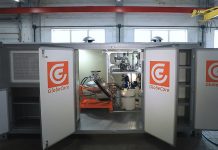By Nick Mills
Head of Wastewater Innovation at Thames Water
Why change?
Our industry needs to do something different as traditional solutions will not solve some the problems now facing the industry. Thames Water is facing significant population growth which will put strain on existing assets particularly the larger urban treatment sites with no space for expansion. By the time you add the possibility of additional and tighter quality requirements the drivers for doing something different are very apparent. Traditionally intensification of processes require additional energy or chemicals and a net increase in OpEx which is not an option if we want an environmentally and economically sustainable business that our customers can afford. However, we as an industry have a large and valuable asset base which we can’t replace overnight and even if we technically could we are unlikely to able to afford to, so whatever we do needs to optimise and build on what we already have.
So the wish list for future treatment is:
1. Needs to fit on existing sites with minimal, if any, land
2. Needs to utilise existing legacy assets
3. Be built with minimal CapEx whilst reducing OpEx
4. Improve effluent quality
That’s quite a wish list!
Luckily, there are innovative solutions out there and many are well developed and have been implemented at full scale. We are in a very exciting period as innovative solutions are now technically and economically feasible and there is more in the pipeline.
Who are the pioneers?
Thames Water have pioneered the adoption of Thermal Hydrolysis starting back in 1998 at Chertsey, Surrey. 20 years on we have multiple THP sites and 50% of all of Thames Water’s sludge is treated with the technology which intensifies anaerobic digestion, enhanced performance and reduces OpEx. Thames and others and now deploying 2nd generation THP at sites like Long Reach in East London and collaboratively developing 3rd generation. Thames Water have also installed Europe’s first struvite recovery plant and the UKs first bio-methane plant.
DC Water, Washington DC USA are commissioning a huge anammox liquor treatment plant the largest in the world, treating a population equivalent of 4 million people. The processes utilises smarter bugs for ammonia removal requiring less energy and foot print than conventional activated sludge.
Waterboard de Dommel, Netherlands have upgraded their plant in Amersfoort with Thermal Hydrolysis, struvite recovery and anammox liquor treatment all at once a bold and brave move which should be respected.
In Brazil they have implemented mainstream anaerobic wastewater treatment for a large site treating a population equivalent of 1 million people. The process doesn’t require aeration and produces a methane rich biogas suitable for power generation. A step change the next challenge will be working out how to get the same bugs to work in our climate something the industry is pushing for and working with experts at Cranfield University.
What is stopping it happen and what needs to change?
We are very risk adverse and ‘set in our ways’ as an industry we have broadly utilised the same process technology for over 100 years. We even had a party to celebrate the 100th birthday of the activated sludge process, developed in the UK. I for one marked this as a very sad day! For a long time there has not been the drivers to develop and adopt new processes but as this article has hopefully explained we are living in a very different world now and we must change. We do have some cultural issues to address risk aversion and I believe the utilities must take the lead. The need for process guarantees on new processes should be debated as this does not drive suppliers and contractors to be innovative. We must have a much more open conversation about risk as making mistakes is ok but not trying is irresponsible.
As the head of an Innovation department I would say this but we need to increase our investment in research and development. Again the utilities should drive this, research by Manchester University showed that R&D led by utilities had greater success – which does make sense as the utilities are the end client, they will purchase successful products if it works and solves a problem. In fact I believe collaborative projects involving a utility and a technology company work even better.
Paranoia surrounding Intellectual Property prevents collaboration and often prevents some technologies \ solutions being considered. This is an age old problem which you trace back the first ever patents. It is has been argued that even Stevenson spent more time defending his patent for Rocket Steam engine than developing the technology as a result he sold very few for the 10year life of the patent, once the patent had expired and competition had access he was compelled to innovate to keep up and sales and the business took off.
Conclusion
The pioneering companies mentioned above have had success because they have taken calculated risks, they have the support or a champion within the company and maybe even have a few mavericks who can ride through the inevitable challenges new ideas receive. Recent trends have shown that the industry is changing and innovation is now getting embedded at scale. It is a really exciting time to be working in wastewater treatment.





